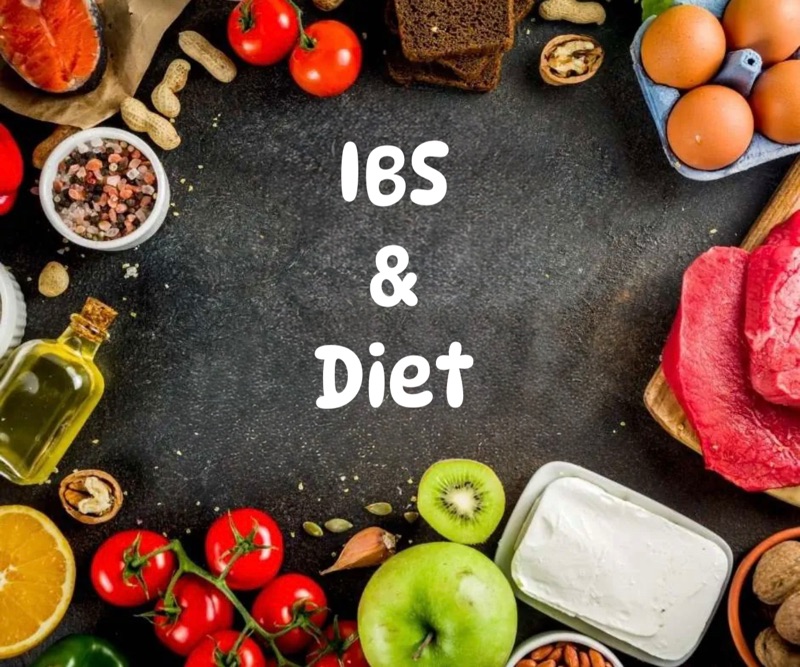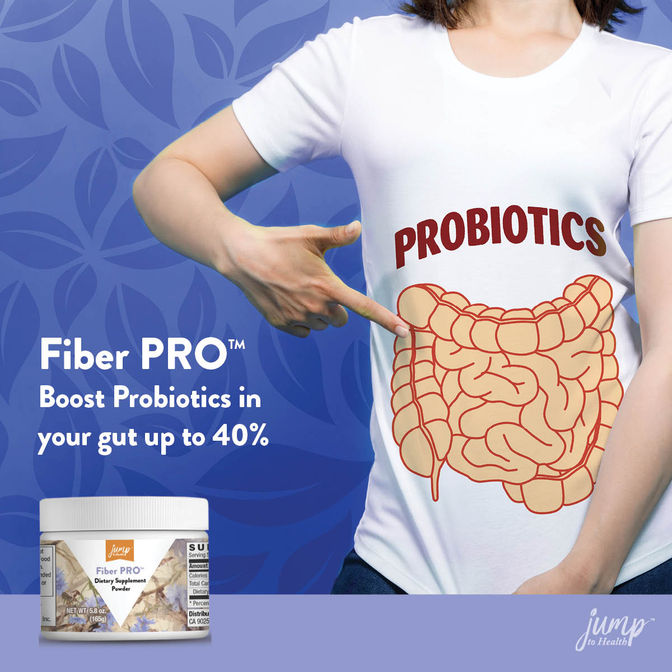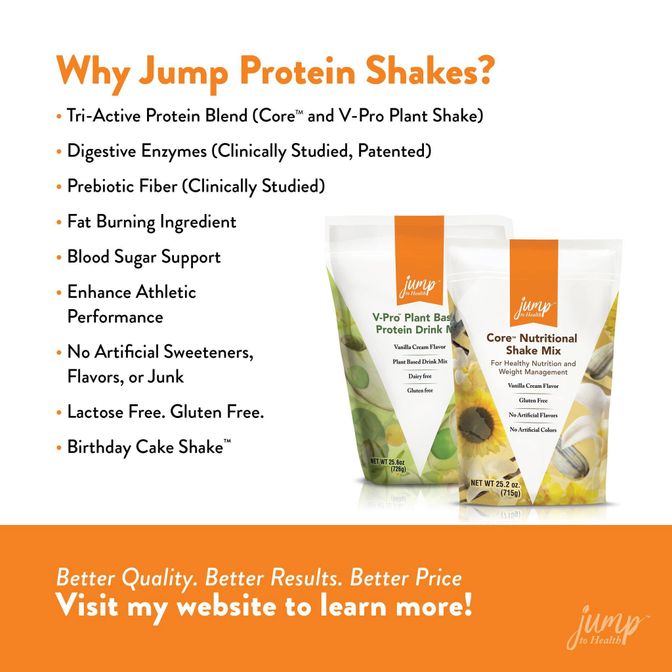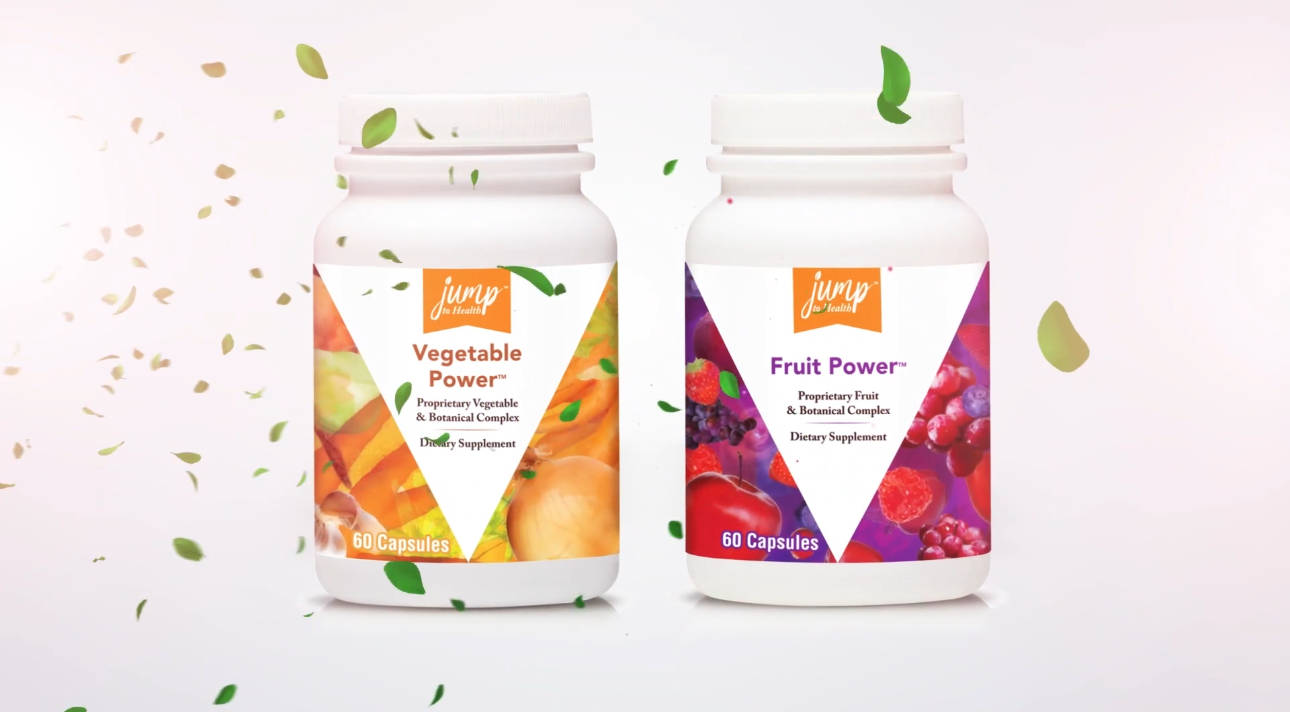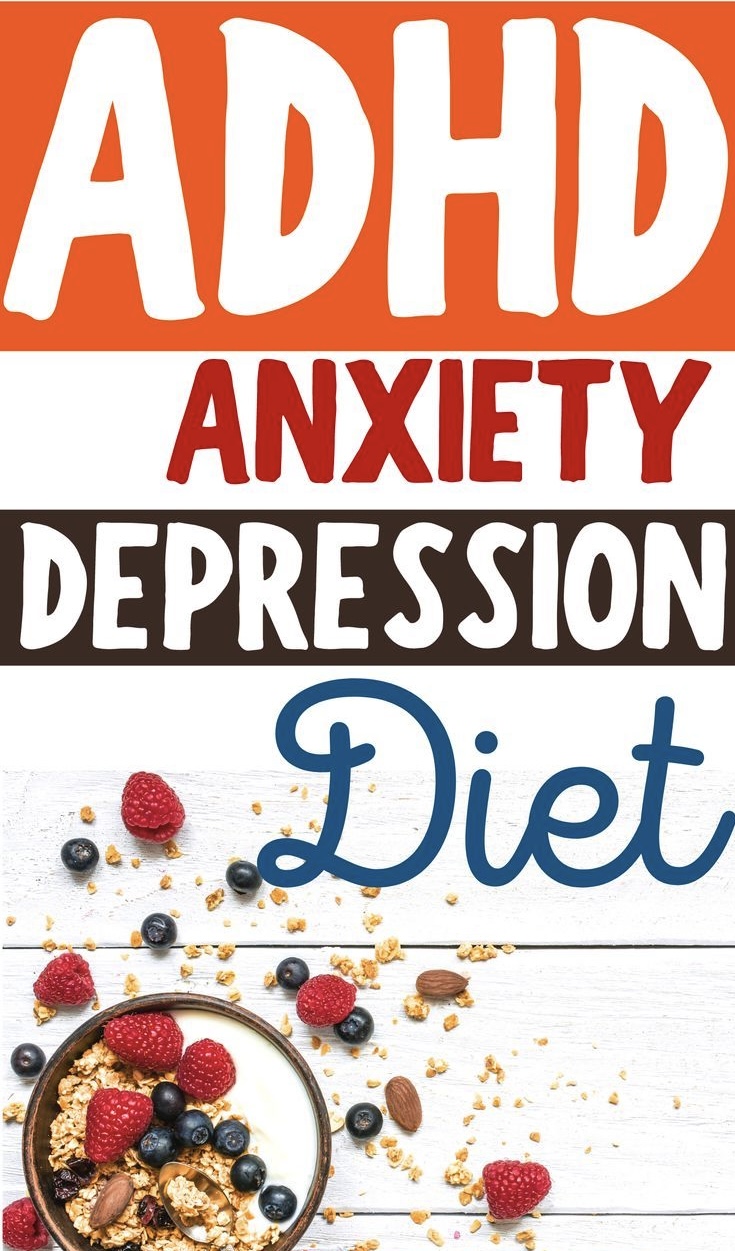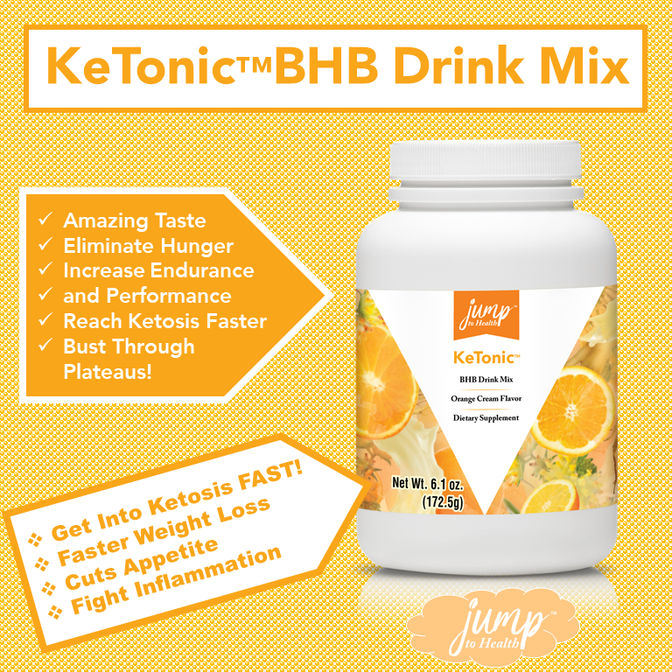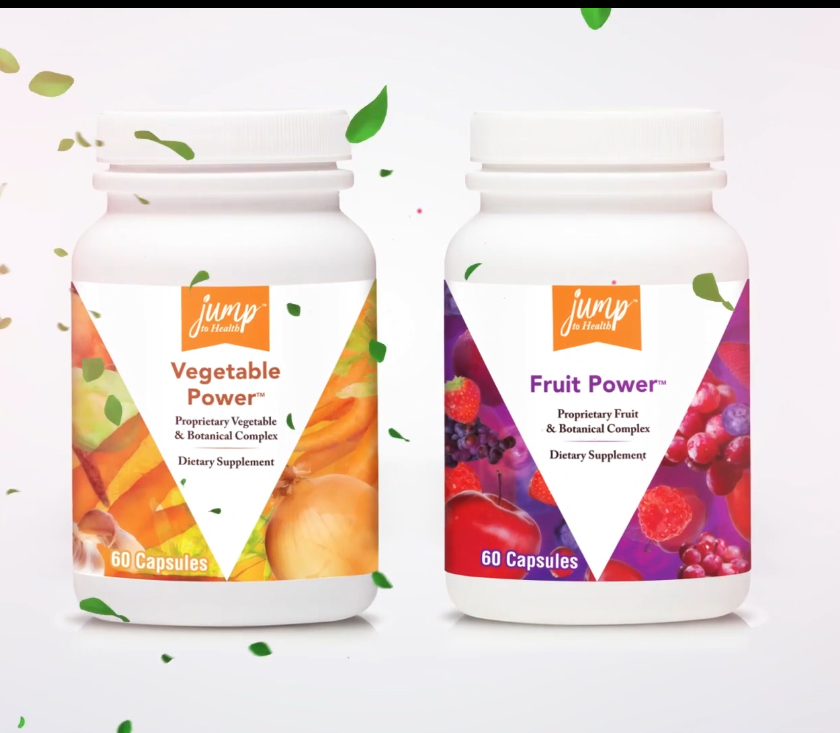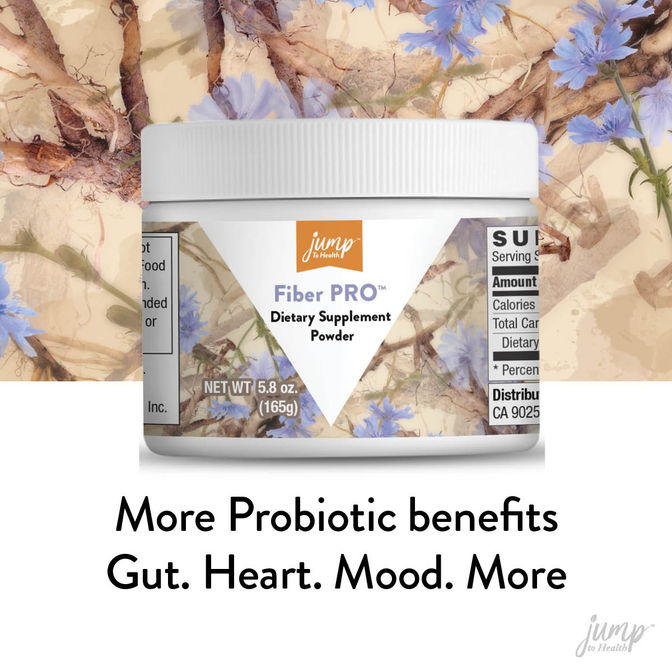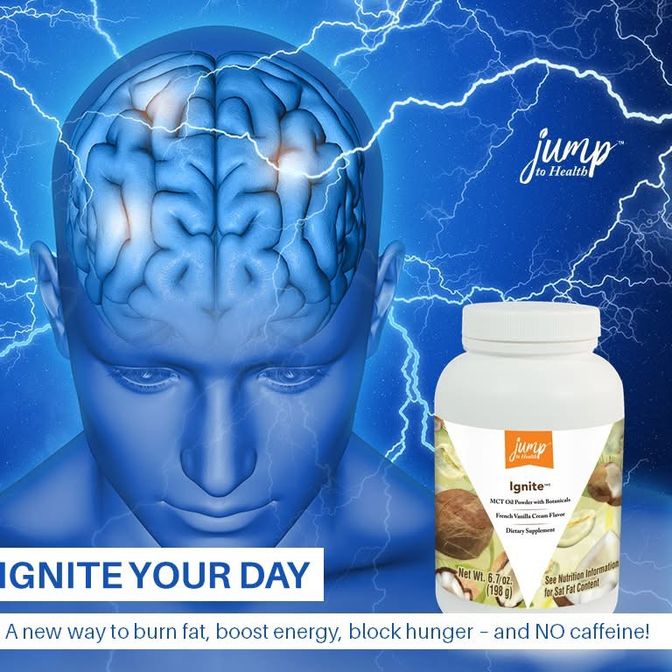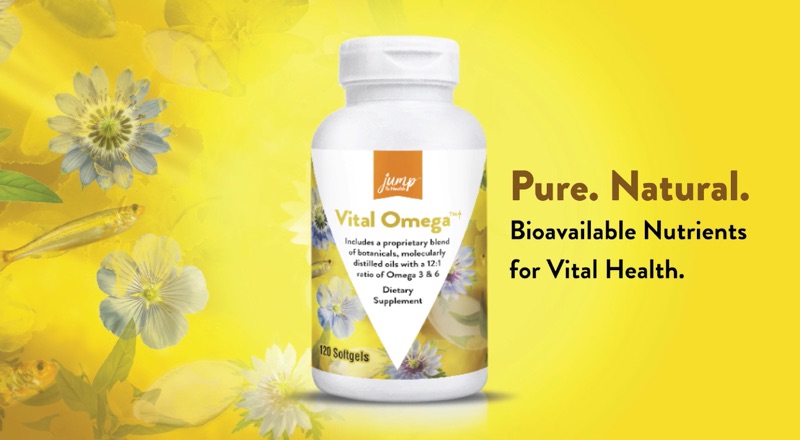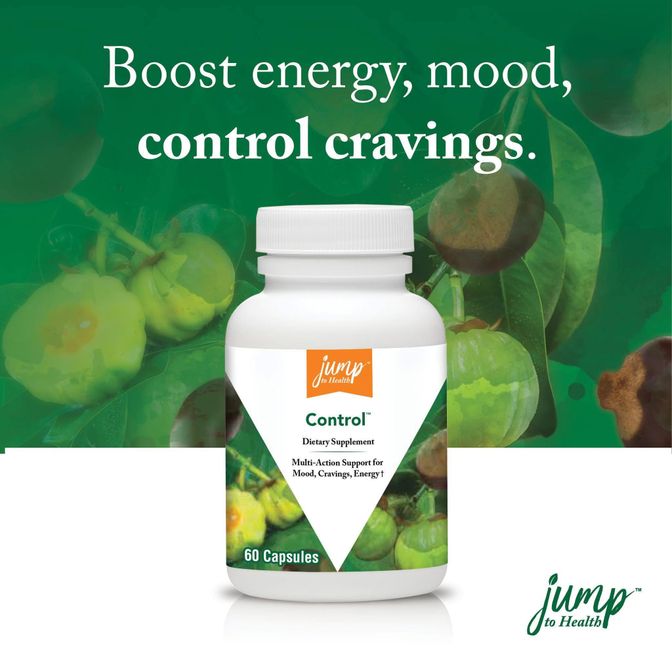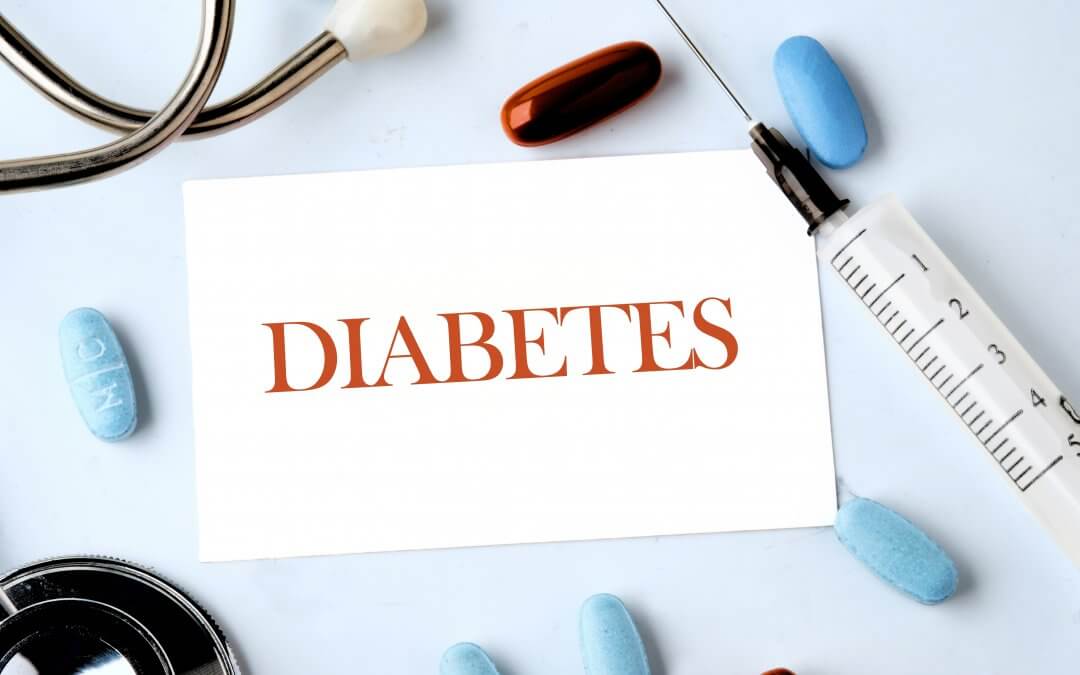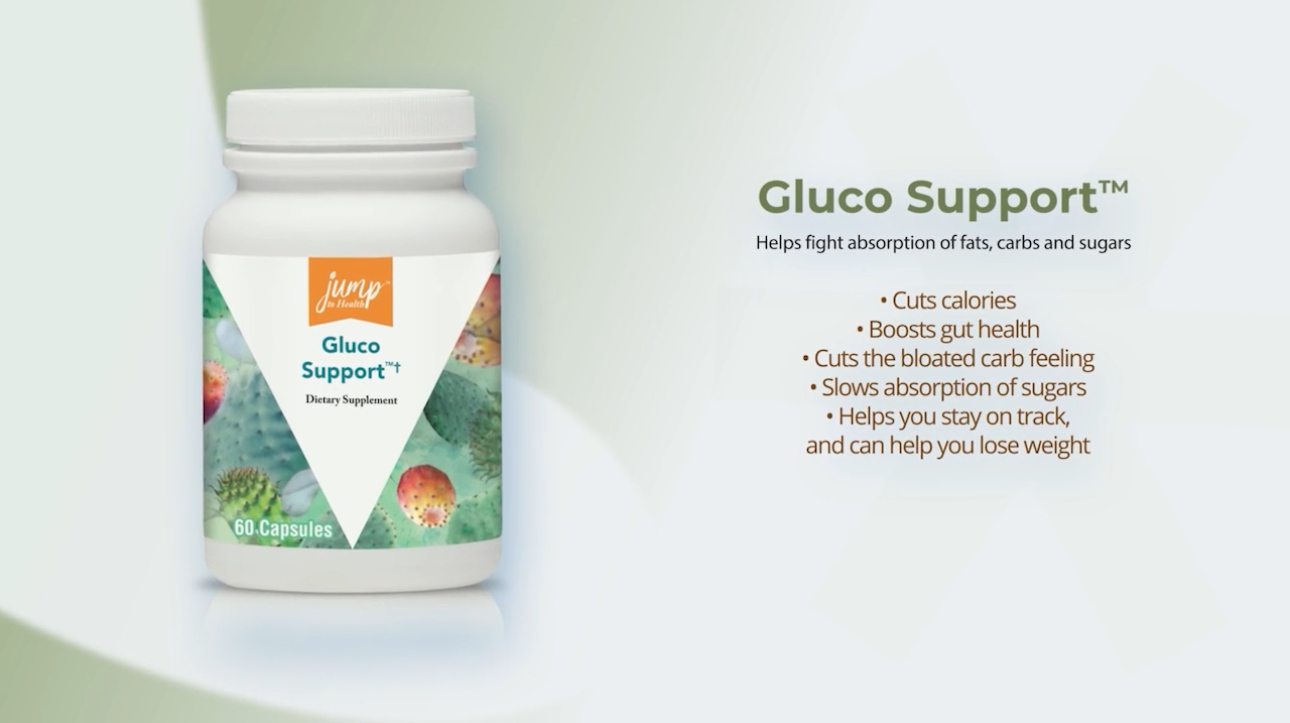Building Lean Muscle & Power of Protein
Building lean muscle has to do with nutrition, activity, and quality of protein. This is why not all protein shakes work the same, nor have the same benefits for your body.

The source and type of protein matter. There is a great article on Harvard Medical School about protein quality.
Your body can add about ½ pound of lean muscle a week – so most people can add 1-2 pounds maximum per month. You can lose more than that in fat in a week! So, when you use the right program, like Jump To Health – not only can you lose fat which helps you see your muscles better, you also can build lean muscle too as we heard from Doug tonight.
Now when we think of building lean muscle most people jump to the idea of eating more protein, like an Atkins diet. This is actually not the way! If you eat too much protein in any one meal, it will convert to fat in your body. And too much protein can be hard on the kidneys to process.
Now we have a lot of muscles in our body. It’s not just our arms and legs.
Here are some interesting facts about muscles:
1. You have 600 muscles in your body, and they are divided into 3 types – smooth, cardiac and skeletal.
2. Muscles make up about 40% of your total body weight.
3. The strongest muscle in your body is your jaw – it can close with a force of 200 pounds. The largest is your gluteus maximus or glutes, the smallest in your ear, and the busiest the eye. The hardest working is the heart, pumping 2500 gallons a day.
4. One pound of muscle is tiny -the size of a small tangerine, while one pound of fat is a lot bigger, the size of a large grapefruit. This is why on our program we recommend you measure, measure, measure. You will burn fat, and lose a grapefruit while you add lean muscle, the size of a tangerine. So, the scale may not change- but you will see and feel a difference in your clothes.
5. One pound of muscle burns 70-80 calories a day, one pound of fat 6-7. So, when you shift your body and lose more fat, you rely on muscles more and increase your metabolism.
6. We lose an average of 10 ounces of muscle a year starting at age 30. Loss of muscle is the #1 reason people go into nursing homes. We don’t notice it typically for 10 years -by then we get winded walking steps – not due to age but due to loss of muscle.
7. You are born with a set number of muscle fibers. You are not making new when you work out – you are making the muscle fibers bigger.
Strength training just 2 – 3 days a week with lifting, or yoga, walking, body weight exercises like squats, pushups – these help
improve balance
enhances posture
increases coordination
prevents injury
protects bone health
eases pain
reduces fat
prevents weight gain
slows age-related muscle loss
So, let’s talk nutrition and exercise tips to build larger, stronger, healthy muscles. You don’t need to lift weights – you just need to be active – even simply walking can help you.
1. Boost your energy
Studies show that adults who walked for 20 minutes outdoors experienced more vitality and energy than those who walked for 20 minutes indoors.
A small study found that 10 minutes of stair walking was more energizing than a cup of coffee for 18 women who felt sleep-deprived.
2. Boosts health
Studies show that walking for 30 minutes per day can reduce your risk for heart disease by 19 percent. If you live with diabetes, walking may also help lower your blood sugar levels.
3. Sleep better
Walking first thing may help you sleep better at night later. A small 2017 study observed older adults aged 55 to 65 who were experiencing difficulty falling asleep at night or were living with mild insomnia.
Those who exercised in the morning versus the evening experienced better sleep quality at night.
And sleep helps build lean muscle - growth hormone is naturally released by the brain into the bloodstream during sleep. Not getting enough sleep means your body doesn’t produce the helpful hormone needed to build muscle and keep tissue healthy.
Nutrition & Muscles:
You need to eat the right amount and right quality of protein to build lean muscle and burn fat.
most people do not get enough protein during the day to build lean muscle.
“The average American breakfast has about 12 grams of protein, which is not enough to stimulate repair and replacement of muscle proteins. For adults, meals must have at least 20-30 grams of protein to stimulate building essential muscle protein,” explains Donald K. Layman, PhD, professor in the Department of Food Science and Human Nutrition at the University of Illinois. With age, our muscles are not as sensitive to protein intake. Therefore, children, teens and younger adults can get away with lower amounts of protein per meal.
Eating adequate protein has a greater thermic effect, meaning it takes more calories to burn protein than carbohydrates or fat. “If you eat 100 calories of carbohydrates, you lose 5 calories. But for 100 calories of protein, you lose 15 to 20 calories because of the additional metabolic roles of protein,” Layman says.
And quality matters:
Lower quality proteins, such as wheat protein, lack one or more of the nine essential amino acids and so fail to stimulate muscle protein synthesis to the same degree as complete proteins like whey. High-quality protein sources, which supply all nine of the essential amino acids, aid muscle gain.
I see a lot of brands and low glycemic breads use wheat protein. It’s sort of like collagen protein – it may have some benefits for skin, hair or nails – but collagen is not going to build lean muscle. Neither are some simple plant proteins.
I see a lot of pea protein – but it’s not purified like we use at Jump To Health. So, you are not going to absorb it and get the same results. This is why people who have tried to follow our program and then use things like Premier Protein – fail. They are using lower quality protein.
Animal proteins have more leucine – which is why many people suggest that a vegetarian diet can be harder to be healthy. This can be supplemented -but again – it is quality that matters.
1. EAT BREAKFAST TO HELP BUILD MUSCLE MASS
Studies show that a protein and prebiotic fiber meal in the morning not only helps you concentrate and focus better, you will eat less throughoutthe day. And with our body only able to absorb 25 -30 gr of protein max per meal – by following our program we are helping you get the optimal amount throughout the day for better health.
2. Eat when hungry and not when you are full
Many people eat because they think they should – but if not hungry, then listen to your body. Maybe you had a big breakfast and can have a smaller lunch.
For those of you who want fast results and curb hunger and cravings, our New You In 22 Program is designed to help you fight cravings, control blood sugar and stay full and satisfied. And with our meal program of breakfast, amazing shake recipes including cake, and bread and desserts that are designed to burn fat – you will not be hungry, you will burn fat with our exclusive FBR or Fat Burning Ratio in each recipe!
3. EAT PROTEIN WITH EACH MEAL TO BOOST YOUR MUSCLE MASS
And the right amount and right types – including healthy nuts, and protein rich snacks.
4. EAT FRUIT AND VEGETABLES – and the right ones.
Nutrient dense foods to promote health, and that are low sugar too. Our meal plans and programs help provide healthy vegetables like cauliflower, broccoli, zucchini, and berries – any berry – is low in sugar and high in nutrition and fiber!
Our New You in 22 program can help you learn to love these fruits and veg, and our Power of 2 Program or Diabetes Program can help you learn to eat healthier with more flavor.
6. EAT HEALTHY FATS
Healthy fats improve fat loss and health as they digest slowly. Healthy fats include avocado, butter, cream, mayonnaise, almonds, pistachios, walnuts. And with Ignite in your coffee or in other foods this ice cream flavored powder delivers the RIGHT mixture of MCT’s to get you into fat burning mode, boost brain and focus, and skin hair and nails too. And with nutrients shown to help those with diabetes too – we help control blood sugar. And Control – can help too. We will talk this in a minute.
7. DRINK WATER TO HELP YOU BUILD MUSCLE MASS
Water is crucial for building and maintaining muscle mass. It acts as a building block for muscle tissue, aids in nutrient delivery, helps regulate body temperature, and is essential for muscle contractions and recovery. Adequate hydration is vital for optimal muscle function and overall athletic performance. Drinking water prevents dehydration but also hunger since an empty stomach can make you think you’re hungry. And it helps flush the body of toxins, while it provides hydration for metabolism. Being dehydrated slows metabolism so you lose less weight. By being hydrated you rev up your fat burning and muscle repair. And to help with this we have our Tea Energy which is a boost for the immune system, with extracts of green tea, white tea, black tea. It tastes like a smooth iced tea- but it is a powerhouse of mood boosting, fat burning EGCG power.
8. Detox from sugars hidden in foods.
Sugar spikes insulin and makes you hungrier, and wrecks gut health. So,your workouts will be worse as when your insulin spikes can lead to more dehydration, and lower energy. GlucoSupport can help as it blocks sugars hidden in foods -including those sugars that don’t sound like sugar on the label.
So how are the Jump To Health products better, and why do they work better?
Even if you were to join and get the recipes – you will not have the same results as when using our products.
The reason is quality.
There are a lot of shakes on the market – and most of them taste like metal or are gritty and bitter. Ours tastes like birthday cake because of the quality of the proteins that we use, and natural flavors too. And our shake was designed to hit the PDCAAS, or muscle building power that international health organizations look for. Most shakes out there including those using collagen do not come anywhere near meeting PDCAAS scores. This is why our shakes are approved in Canada, and our products have NPN numbers. We are also made in a certified Kosher, Certified Halal, Certified Organic, Certified Natural, FDA licensed and Health Canada licensed facility. Quality matters and that is the key to Results.
Our shakes and our unique Tri-Active protein blend make them more absorbed and easier to digest than other shakes and good for kids to elderly for that reason. And for less money too - $1.25 a kid serving, $2.25 an adult serving.
✓ Tri-Active Protein™ Blend
✓ Aminogen
✓ Astragin®
✓ Fibersol®
✓ Palatinose®
✓ Burn Fat, Build Muscle
✓ Digestive Health
✓ Immune Health
✓ Mood & Focus
The Core shake uses a whey hydrolysate -the highest absorbing, easiest to absorb protein, along with whey isolate and whey concentrate. A perfect blend for building lean muscle.
We added in Aminogen to both our core shake and V pro plant shake to help:
Aminogen is a patented enzyme that has been shown improve protein digestion and increase amino acid levels absorbed from dietary protein. Clinical research has shown Aminogen® to increase BCAA retention levels by 250%, nitrogen levels in muscle by 32% and overall amino acid plasma levels by 100%. Researchers also found all amino acids are released in greater amounts when protein is digested with Aminogen®. What's more, Aminogen® is 100% natural and ideal for anyone looking to build quality muscle or achieve lean body definition.
The Core shake:
AstraGin™ - a proprietary and patented form of ginseng and astragalus (herb). Supports the absorption of amino acids, glucose, and vitamins at the cellular level.
It helps muscles because it helps
- Amino acids absorption such as Arginine and Citrulline by 66.7% and
43% respectively.
- Vitamins absorption such as folate by 50.4%.
- Glucosamine absorption by 41.9%.
- ATP production by 18%.- which is the body’s energy source.
We have the VPro Plant shake:
VPro is the best tasting plant-based shake, guaranteed – and the highest quality.
The other companies use simple pea protein which is only 40% -50% protein, or if you are lucky pea concentrate that maybe is 60% protein. That is because it is cheaper, and they can claim protein on the label. The challenge is it is not purified to all protein. So, you get the carb flavor and texture, not the protein. It is about quality, and we use the more expensive pea protein. Pea protein is a complete protein and has all the amino acids we need to be healthy and build lean muscle.
We have a pea hydrolysate – the most concentrated and pure pea protein -and 99% absorbable along with pea isolate – 90% absorbable, and then pumpkin seed protein.
People with malabsorption disorders and people with food allergies or sensitivities can usually tolerate a hydrolyzed protein formula better than the others. It’s used in hypoallergenic infant formulas, for example.
Hydrolyzed proteins may also cause less of an upset stomach for those with gut conditions like irritable bowel syndrome. They have also been shown to benefit those with slow stomach digestion. Pumpkin seed protein – is protein derived from pumpkin seeds. These are high in minerals, such as zinc and iron. They also have high levels of antioxidants, like vitamin E. Research indicates that adding pumpkin seeds to your diet can improve overall health and heart health. It's also been linked to the decrease in certain types of cancer. Pumpkin seed protein is very anti-inflammatory. So, anyone with inflammation, like arthritis, may find this helps.
For athletes we also use isomaltulose as a sweetener. The brand we use is Palatinose – it has been studied in Type I and Type 2 diabetics, and shown to help them manage blood sugar because it does not spike insulin. This is critical for athletes too as insulin spikes weaken performance. The sweetener has been studied in athletes and shown to help with endurance, stamina, and energy, and the sweetener has fat burning properties too. So, the shake helps you get fast results, fight inflammation, and tone up. Now one thing we tell people is to measure their inches. If you lose 1 pound of fat (size of a large grapefruit) and gain 1 pound of lean muscle – the scale shows no movement. BUT you will be 1-3 inches smaller!! So, keep track and watch how fast you can burn fat, build lean muscle, and reshape your body.
Benefits of both shakes:
Regulates Appetite with 41% increase in peptide absorption
73% decrease in gut inflammation
Supports healthy insulin levels
10% reduction C Reactive Protein
3 Times greater protein absorption
Increases HDL/Lowers LDL
Boosts Lean Muscle
Supports regularity
Eases digestion, bloating
Amino Acid Increase100%= Brain,
Immune, Detoxification

Learn about the Jump To Health Protein https://www.fluid.app/s/aa95ed
Gluco Support
This product has Berberine (known as Nature’s Ozempic), Gymnema Sylvestre, cinnamon bark extract, neopuntia fiber and white kidney bean extract is a powerful way to help keep blood sugar level, curb hunger, and also help you absorb less sugar, fats, and carbs hidden in food. It will lower the glycemic index of foods, and help you lose weight. Without stimulants or caffeine.
. These capsules taken before or with a meal can help fight that. Or if you want a treat night – well, it can cut calories in pizza up to 35%-40% helping you stay on track.
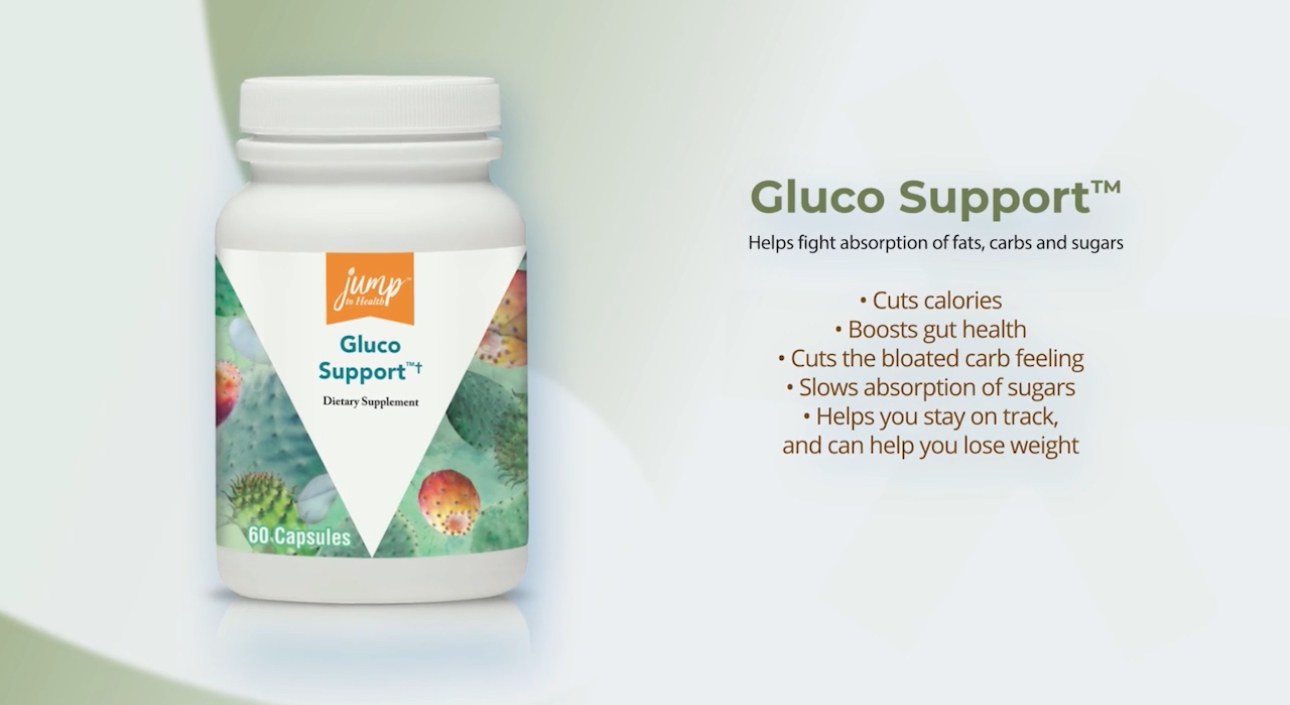
Learn about learn about Gluco support https://www.fluid.app/s/89709c
Both shakes have a full serving of prebiotic fiber – also key for immune health and especially athletes who need to fight free radicals in the body when they workout.
https://www.frontiersin.org/articles/10.3389/fnut.2023.1207543/full
Control – is a multi-action product that does more than help Control hunger and cravings. It can help with Energy, Happy Mood, and help shrink fat cells, and tell the body to store less fat. We created Control to be better – better blood sugar control, cravings, mood, and a little energy. No jitters -just healthy energy with 70 mg of caffeine which is about ½ cup to 1/3 cup of brewed coffee worth of caffeine. This little secret of a product helps your body’s fat cells to shrink, while it boosts mood, keeps blood sugar stable and fights cravings. You can lose weight with Control and avoid the Hangry’s.
Clinically studied nutrients at the studied doses.

Learn about Control https://www.fluid.app/s/e79bee
1.Green tea – we have it in our Control, and our PowerOx. Green tea extract can accelerate fat loss and improve joint, gut, skin, and heart health, and reduce muscle soreness after exercise. The amount of extracts – not caffeine, but the healthy polyphenols is like drinking 4-6 cups of tea per capsule.
Studies show it helps fat breakdown, boosts metabolism, boost antioxidants, increases fat burning during exercise too while it boost gut, heart, skin.
https://www.ncbi.nlm.nih.gov/pmc/articles/PMC4055352/

Learn about Power Ox Tea https://www.fluid.app/s/0b1ad1
2.In Control we also have Garcinia Cambogia, which is derived from a tropical fruit. Garcinia cambogia contains a substance called hydroxycitric acid (HCA). HCA has been shown to increase levels of serotonin, a neurotransmitter that influences mood, social behavior, and appetite. It also inhibits an enzyme that tells your body to store fat. So,you can burn more fat and have better serotonin.
3.Then it has 5 HTP – a natural appetite suppressant found naturally in our bodies. One of the largest roadblocks a person will face on their way to a healthier body is a nagging appetite, and Control can help in multiple ways. It is an amino acid pre cursor of serotonin-with anti-depressant, anti-anxiety, sleep, and weight loss benefits. Low serotonin levels are linked to depression and anxiety, and worsen the symptoms of menopause. As your serotonin levels rise, your mood improves. Studies show that 5 HTP can help reduce appetite so you have less hunger.
4.Then Dl-Phenylalanine is an essential amino acid which can affect any number of systems in the brain. It can help you feel happier, and less stressed. We tend to eat more when we are sad, lonely, or blue – so by helping you feel happier – you can eat less.
Phenylalanine is an essential amino acid, and one of the building blocks of protein and the muscles in your body. Phenylalanine is considered "essential" because you need it to function, but your body cannot synthesize enough of it independently, so it must be consumed either from food or via phenylalanine supplementation. Phenylalanine has also been studied for use in the following conditions.
-Parkinson’s disease: There is evidence that phenylalanine could be beneficial in treating the symptoms of Parkinson's disease, though more research is required.
-Alcohol withdrawal: Phenylalanine, along with some fellow amino acids, has shown indications that it could be useful in treating alcohol withdrawal symptoms.
-Chronic pain: D-phenylalanine may help with pain relief in certain instances (like low back pain), though so far research results are still spotty and not all of the studies produced results with statistical significance.
-Weight loss - L-phenylalanine may help with weight loss in a couple of ways. First the hormone cholecystokinin (CCK), which is stimulated by L-phenylalanine, may act as an appetite suppressant and thus lead to lower calorie consumption throughout the day. Because dopamine is responsible for feelings of pleasure (the kind you may get from eating your favorite dessert, for instance), regulating dopamine levels can be beneficial in the treatment of obesity. If L-phenylalanine can be used to keep your tyrosine and thus dopamine levels high while you go on a diet (and cut your usual dopamine supply), it may help reduce food cravings and lead to more sustainable weight loss.
From better memory and focus to an improved mood, reduction in stress, anxiety, and depression. This supplement can do it all. It even works as an effective pain reliever in a way.
You can get some phenylalanine from meat, seafood, soy, seaweed, nuts,and seeds including pumpkin seed which we have pumpkin seed protein in our V Pro shake.
https://www.healthline.com/health/depression/can-garcinia-cambogia-help-with-depression
https://www.selfhacked.com/blog/5-htp-serotonin-depression-risks-benefits/
https://www.bestnootropicsnow.com/phenylalanine/
https://aminoco.com/blogs/weight-loss/l-phenylalanine-weight-loss
5.Chromium – a highly absorbable type of chromium that helps keep blood sugar stable.
In addition to its effects on glucose, insulin, and lipid metabolism, chromium has been reported to increase lean body mass and decrease percentage body fat, which may lead to weight loss in humans.
So, Control is a fat burning, fat busting, hunger controlling, energy and focus, calorie burning, antioxidant boosting weight loss one of a kind. And it is only $38…half of that jacked up stimulant thing I looked at today.
So, to build muscle
1. Exercise
2. Proper Nutrition.
3. Sleep, hydration
4. Jump To Health shakes, Control, and Gluco support
Learn more about Jump to health http://www.livelife-now.com
